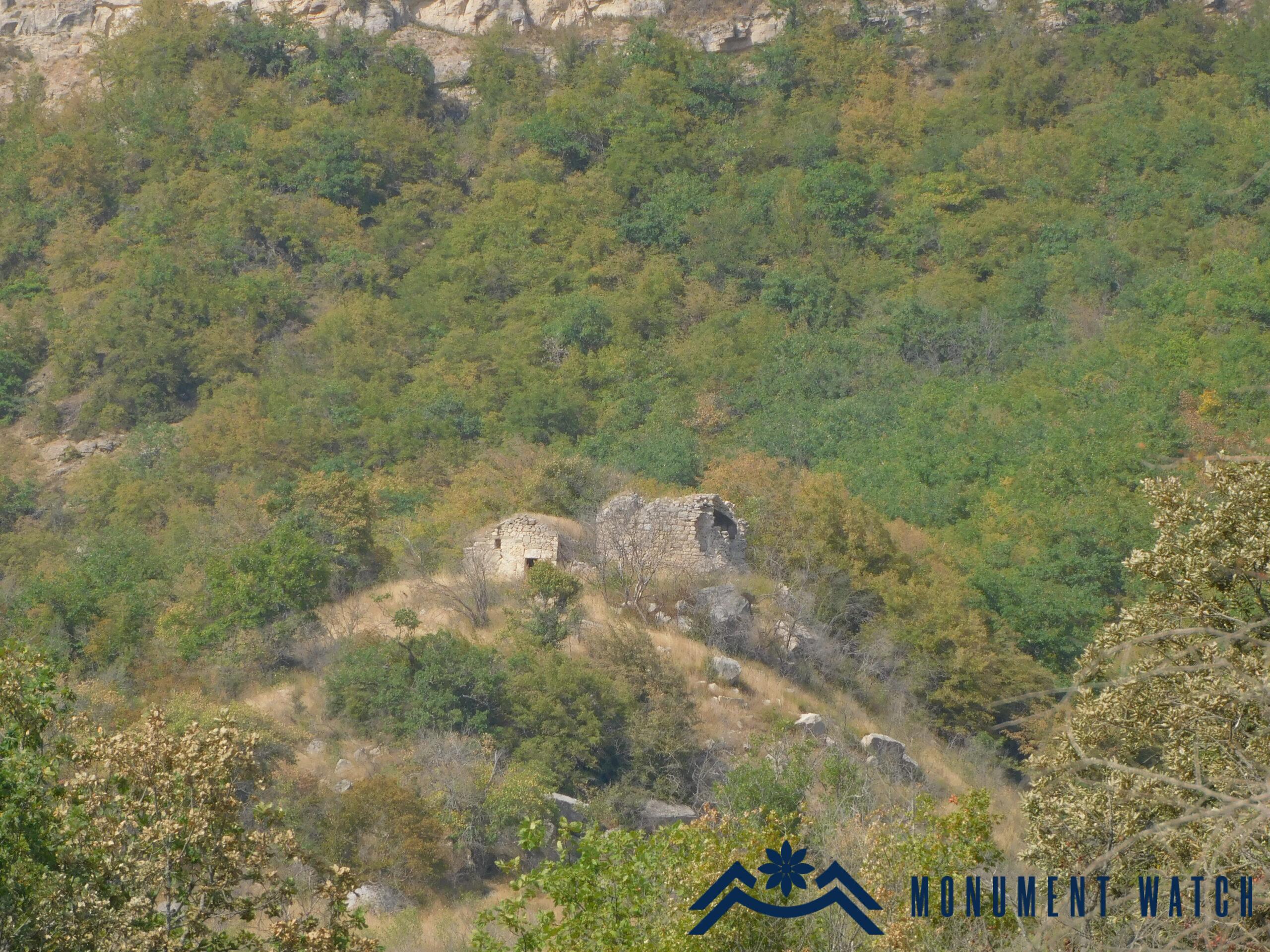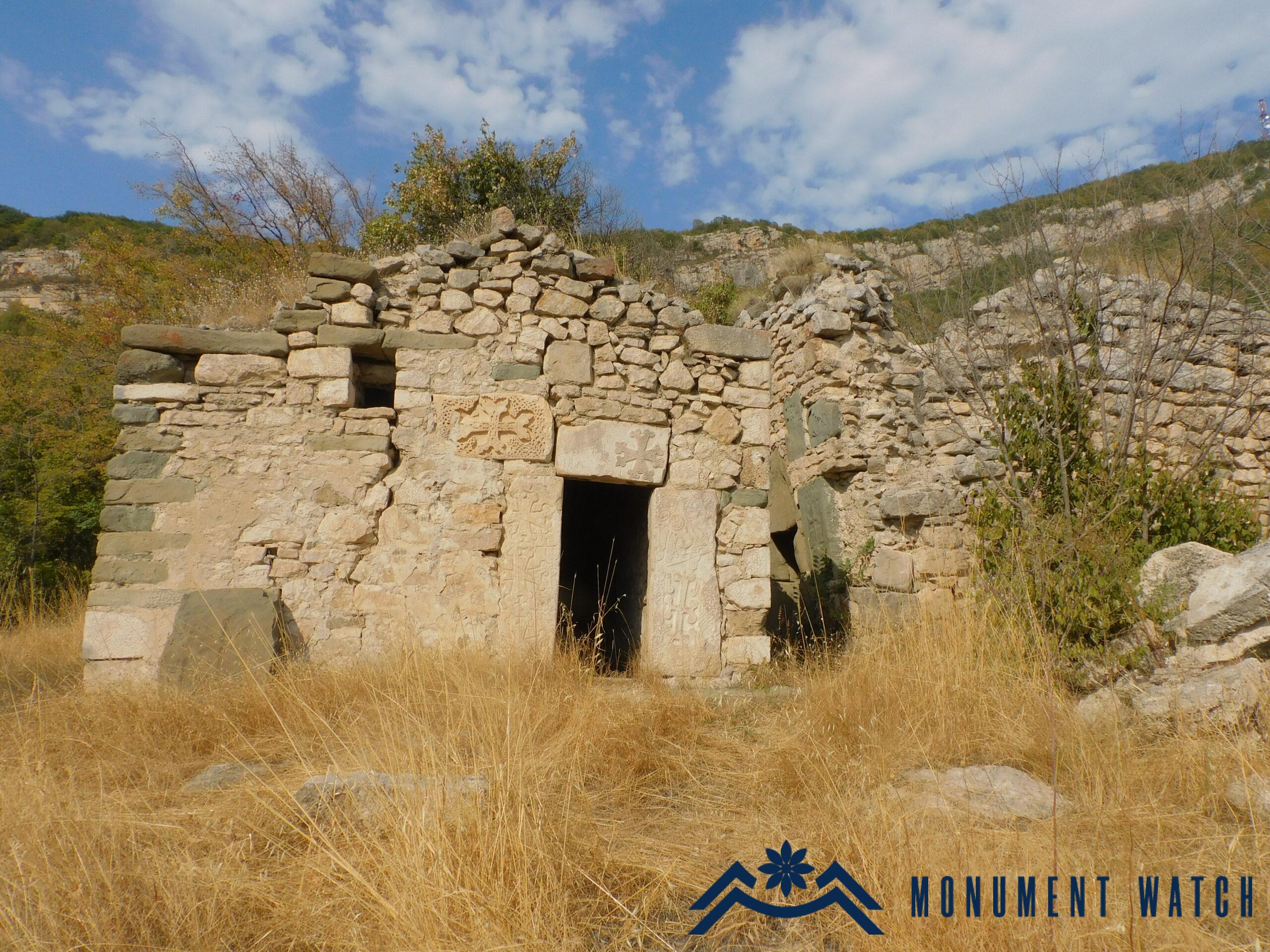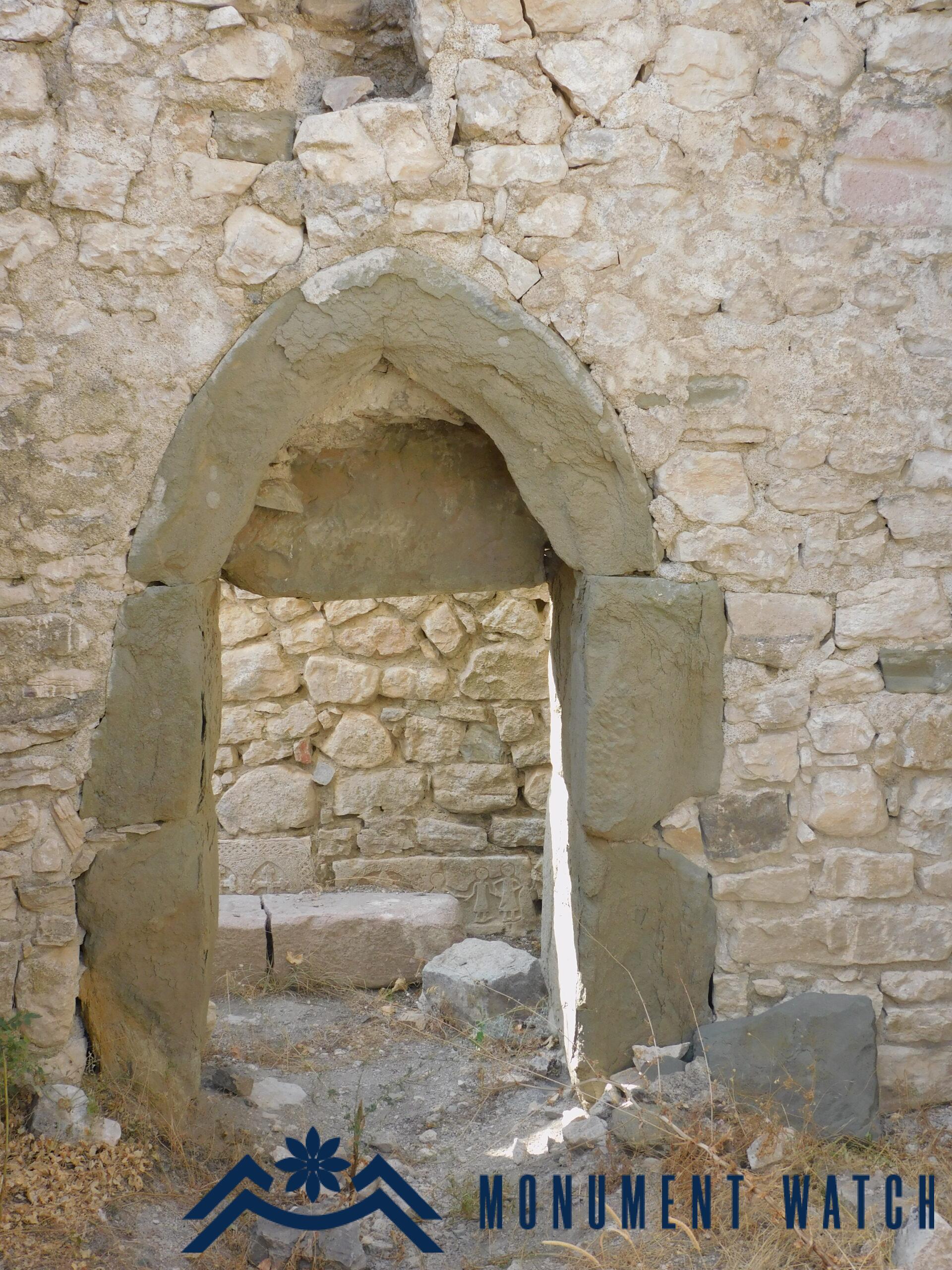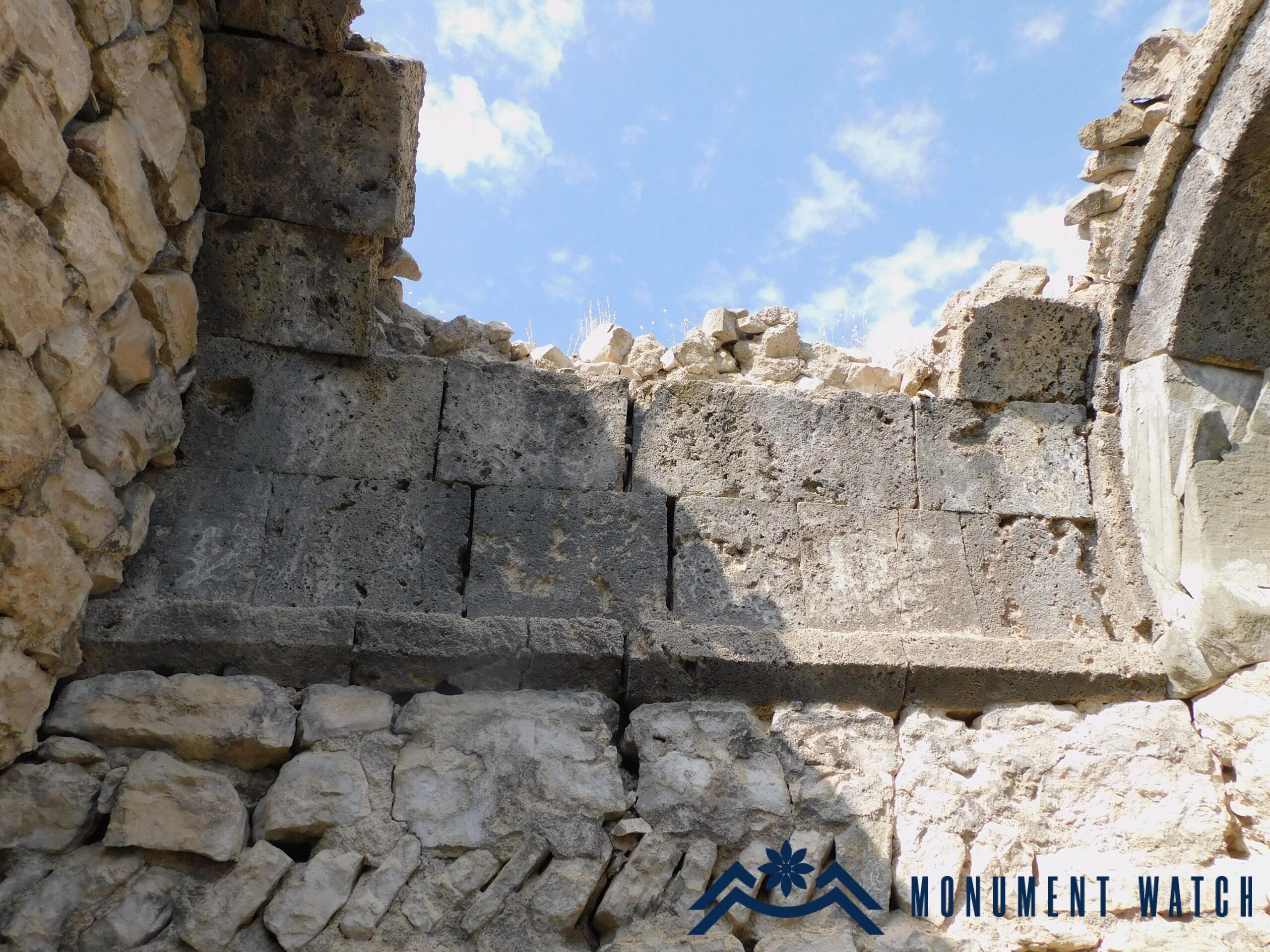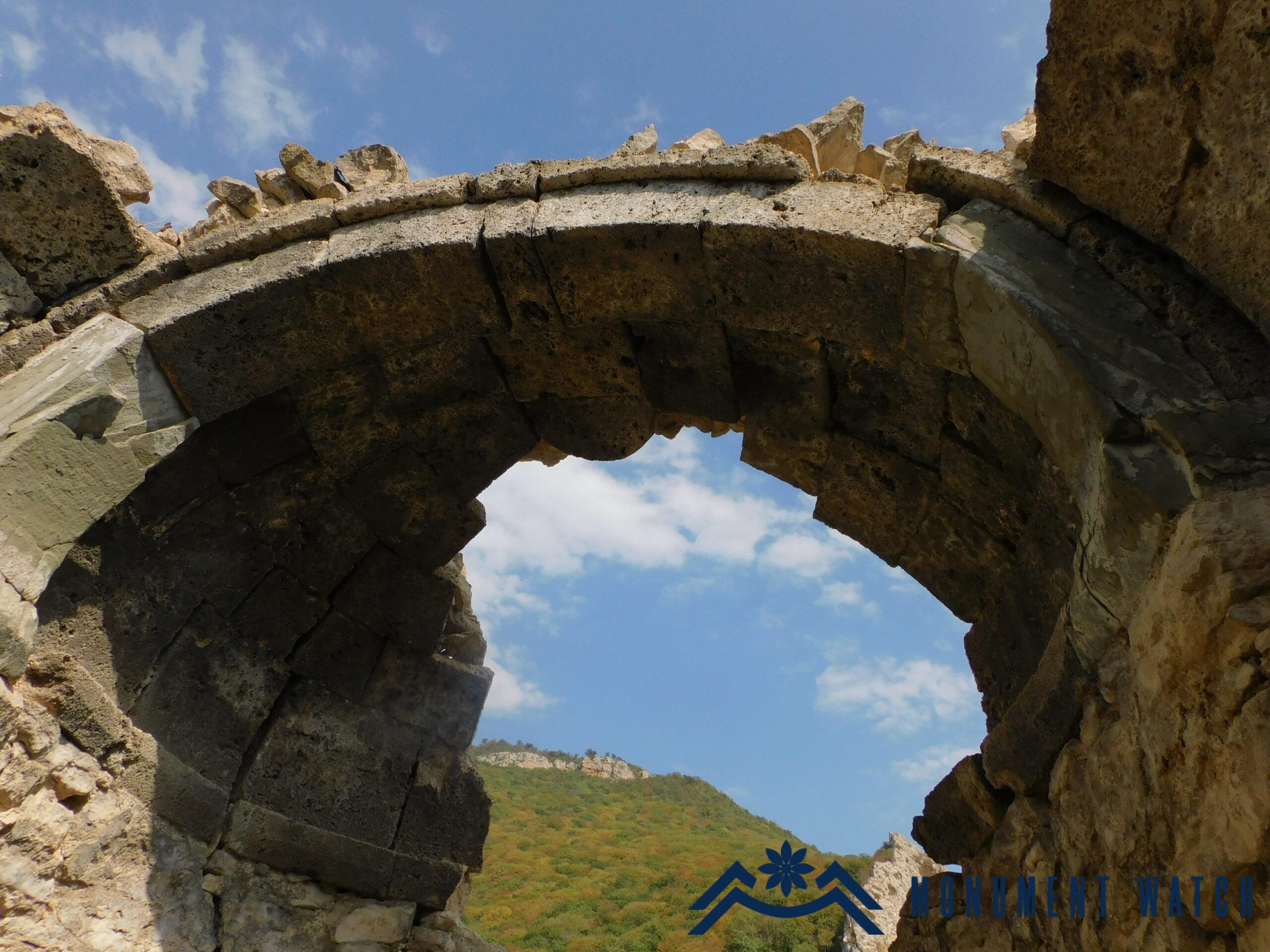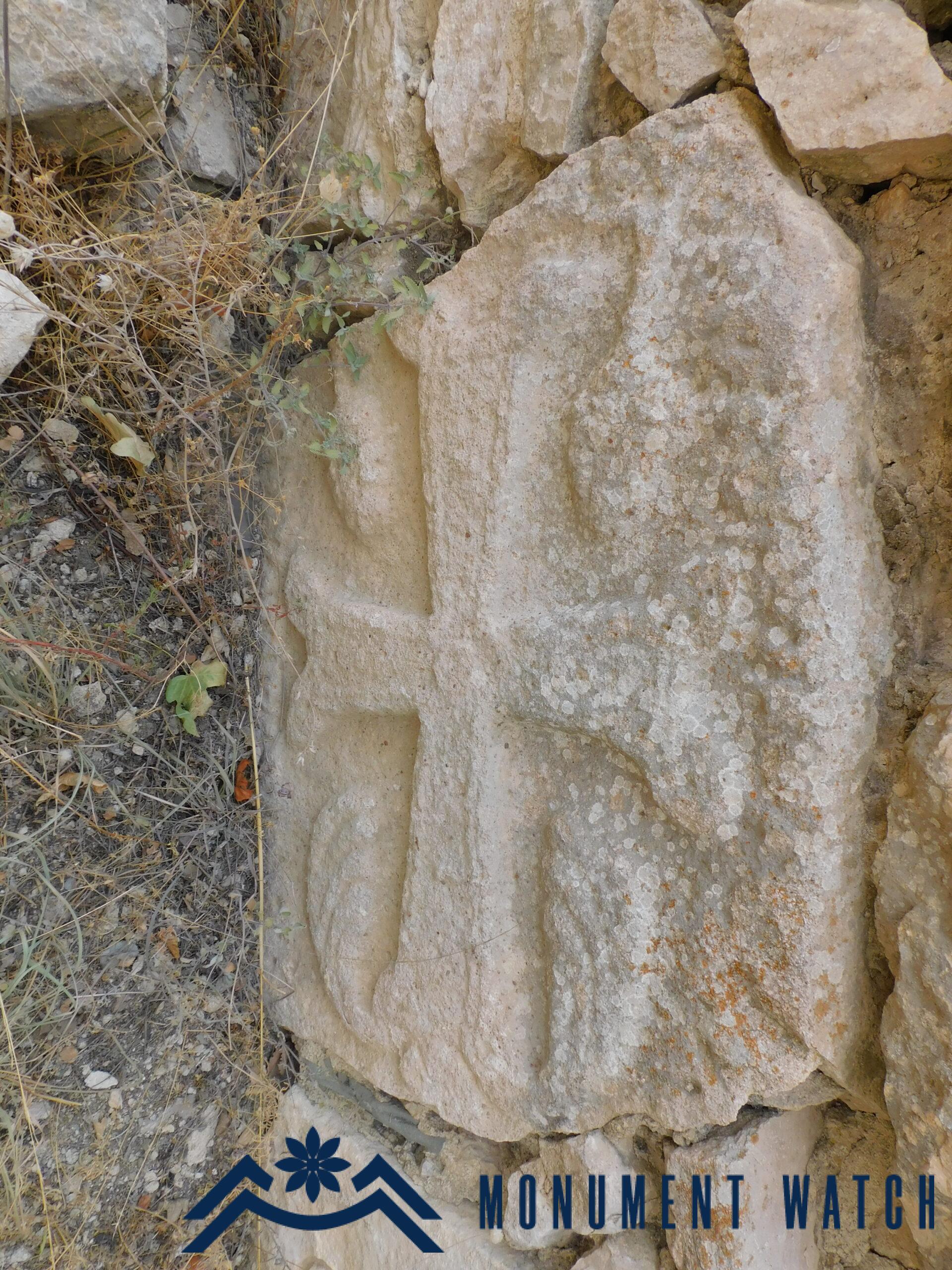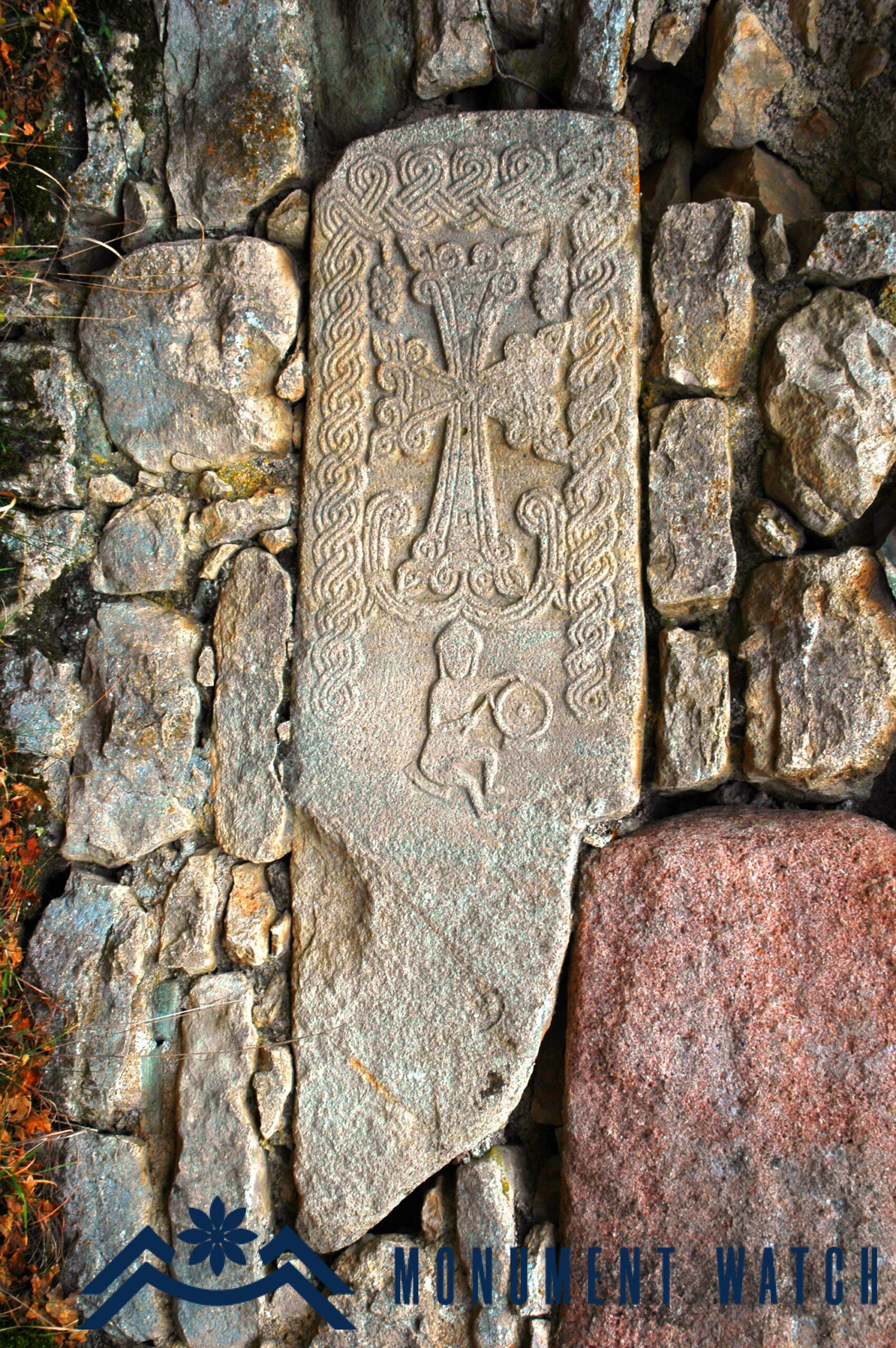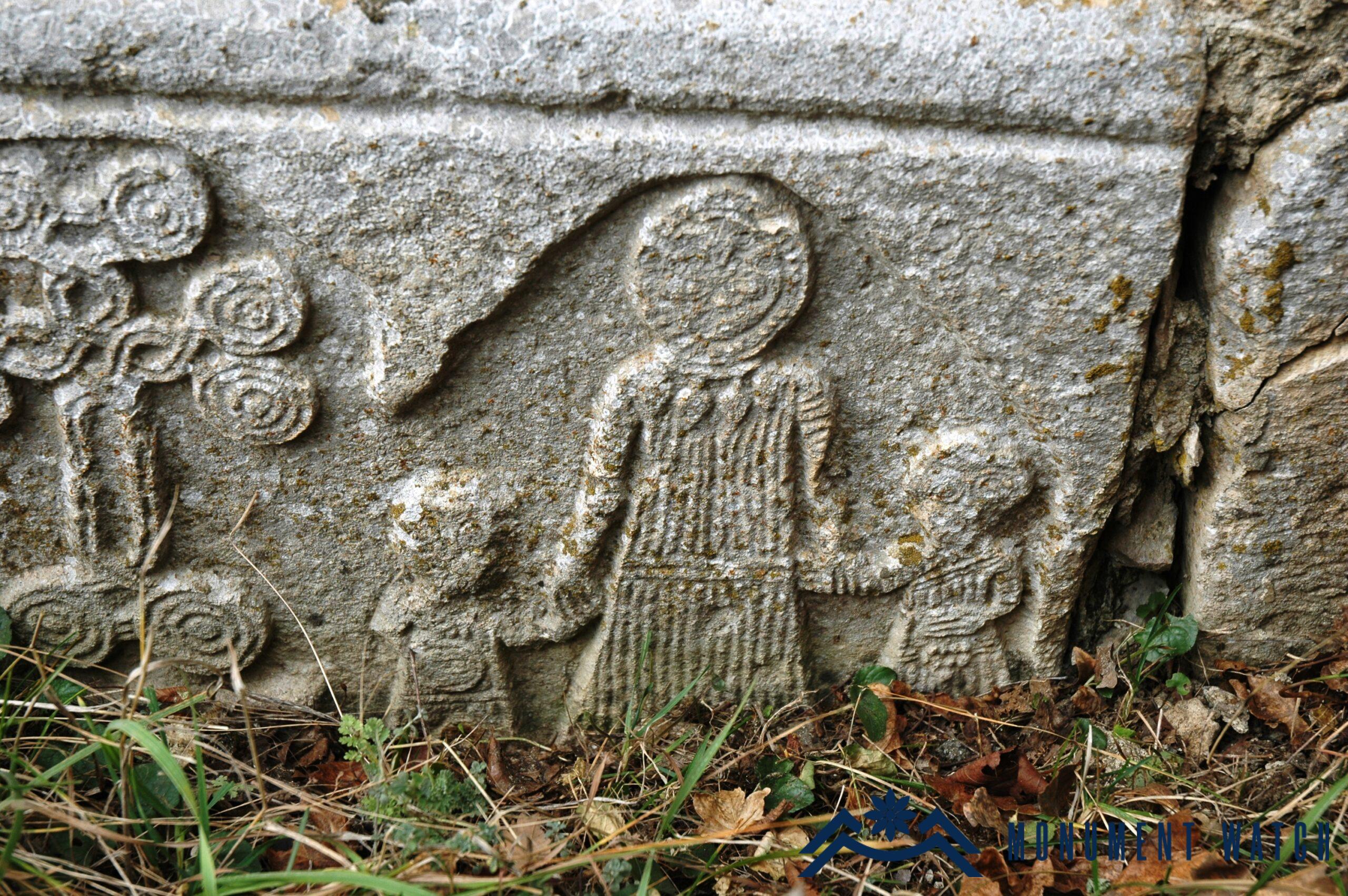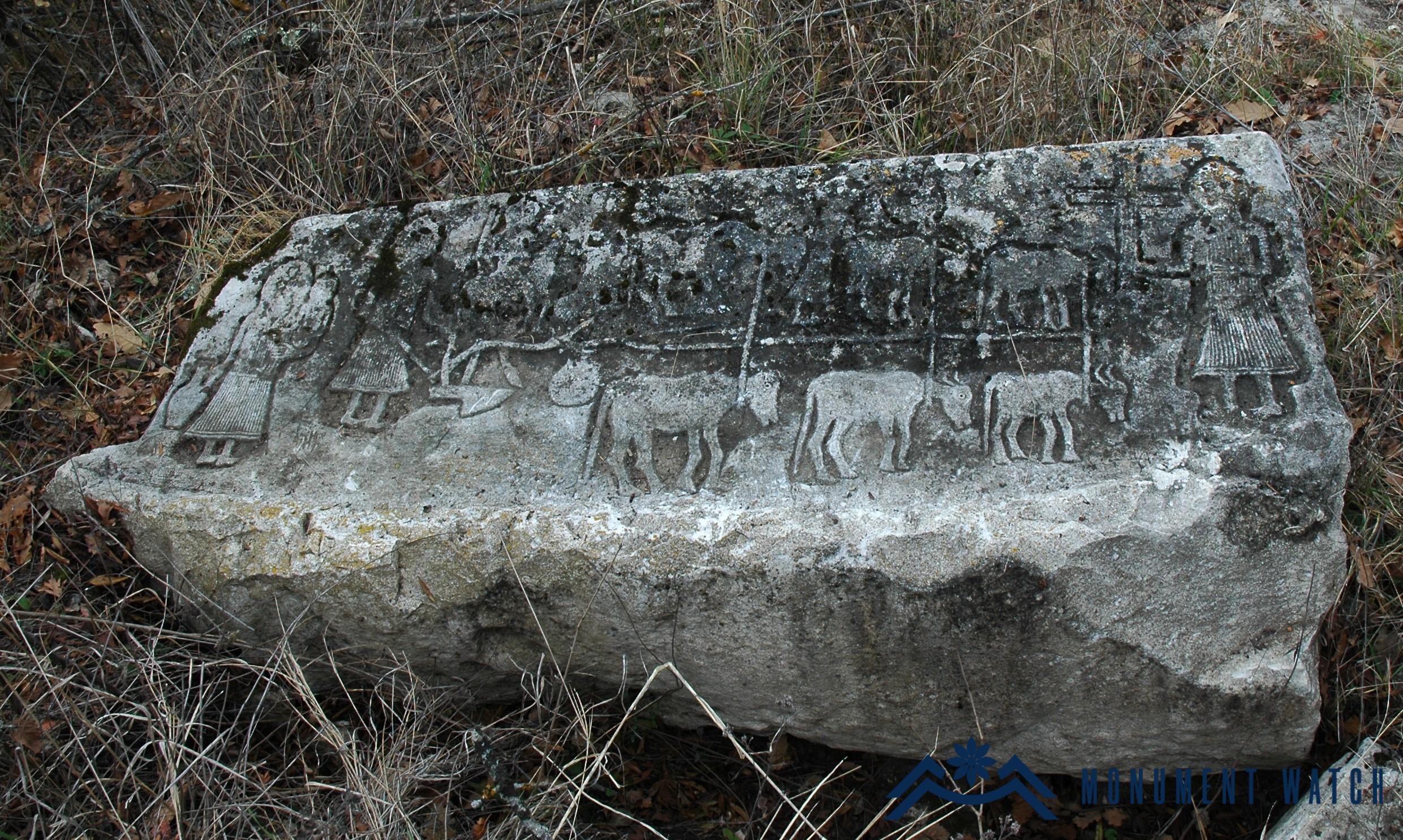The “Yghen Nahatak” (Khachin Tak) monastery
Location
The monastery is situated 3 kilometers northwest of Karmir village (Drnavaz) on a hill (Fig. 1). It was seized by the Azerbaijani military in September 2023.
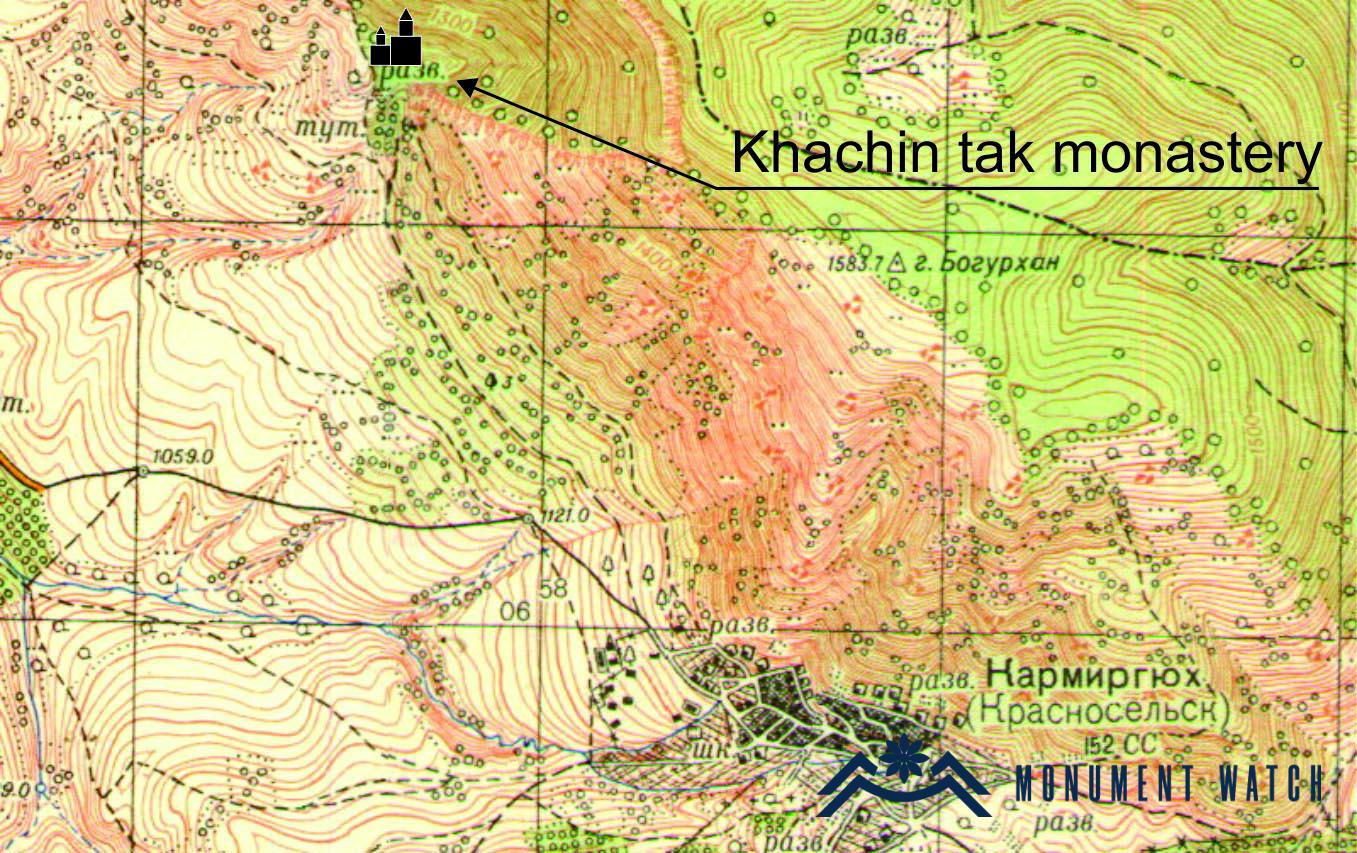
Historical overview
The monastery is also referred to as "Khachin Tak." Precise information regarding its construction is not available. At present, the site comprises a church, a guest house, and a cemetery.
According to one of the popular legends, the monastery came to be known as "Yghen Nahatak" because, as the story goes, enemies killed a pregnant woman on the premises, and "Yghen" or "Hghen Nahatak" translates to "pregnant martyr".According to another legend, during the battles against Tamerlane, a village agha (village head) was martyred, along with many others. The villagers collected their bodies on the hill, constructed a church in his memory, and named it Yghen Nahatak or Aghaan Nahatak, meaning "agha" or "village head martyred." To the west of the church, near the entrance, a guest house was constructed for pilgrims in 1861(HASE Artsakh Diocese, Aghin Nahatak, and Fig. 2).
Architectural-compositional examination
The church is a modest single-nave hall measuring 6.8 meters in length, 5.3 meters in width, and 5.8 meters in height. It was constructed using rough limestone blocks and elongated, flat slabs of white slate adhered with lime mortar. To reinforce the walls, rows of regularly shaped cubes are strategically interspersed with inclined rows of flat slabs. The entrance is crafted from polished black sandstone stones (Fig. 3).
The vault is supported by a horizontal storage system constructed on both the south and north walls (Fig. 4). The holder, the nave, and the dome are all crafted from single polished slabs (Fig. 5). This classic architectural design of the vault and dome suggests that the original structure of the church can be attributed to the 12th-13th centuries. Based on the presence of khachkars (cross-stones) integrated into the western wall, it is apparent that the church underwent later renovations.
Adjacent to the church on the western side, there is a guest hall featuring a southern entrance and a unique "gallery" adorned with a profusion of khachkars, crucifixes bearing cross signs, and tombstones. Among the khachkars, there are notable examples from various centuries, including those from the 9th-10th centuries (Fig. 6), 12th-13th centuries, and 16th-17th centuries. The site also contains tombstones dating to the 16th-17th centuries. Of particular interest are two khachkars from the 12th-13th century, one featuring the sculpture of a carpenter (Fig. 7), and another depicting a scene of an armed horseman and a group of people (Fig. 8). Additionally, there are tombstones with sculptures of a mother with children and scenes of tillage (Figs. 9 and 10).
About 100 meters away from the church is a cemetery adorned with khachkars and tombstones.
"In the year 1071, by the will of the Almighty God, I, Grigor, along with my brothers in the Congregation of God, dedicate this powerful cross under the patriarchate of Ohanes and Ter Nerses , pray" ( Barkhutareants 1895, 131; CAE 1982, 146).
Bibliographic examination
Makar Bishop Barkhutareants is credited as the first to refer to the church in his writings (Barkhutareants, 1895, 131). In the 5th volume of "Corpus of Armenian Lithography" published in 1982, there is mention of inscription khachkars, but it appears that the readings from Barkhutareants were incorporated, likely because the compilers did not conduct on-site research themselves.
The condition before, during, and after the war
The monument remained undamaged during the 44-day Artsakh war. However, there is no information available about its condition following the September 2023 war.
Bibliography
- Barkhutareants 1895 - Barkhutareants M., Artsakh, Baku, Aror.
- CAE 5 - Corpus of Armenian lithography, issue 5, Publishing House of the USSR Academy of Sciences, Yerevan, 1982.
- HASE Artsakh Diocese, Aghin Nahatak-https://artsakhdiocese.am/churches/gortsox/khonarhvats-kisaver-himnaver/askerani-shrjan/aghin-nahatak-kam-khachin-tak
The "Yghen Nahatak" (Khachin Tak) monastery
Artsakh
